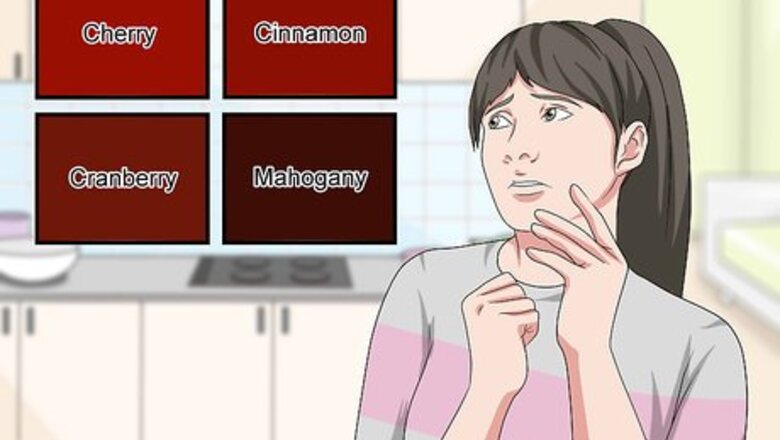
views
Preparing to Dye Your Hair

Decide on a shade of maroon. "Maroon" means different colors for different people. For some people, it is more purple, while for others it is more red o burgundy. Another thing to keep in mind is your skin tone; certain shades of maroon will look better against certain skin tones. Here are some recommended shades of maroon or burgundy that suit different skin tones: If you have a neutral skin tone, of if you can't tell what skin tone you have, stick with a warm, Cabernet shade. If you have a peachy or pink skin tone, opt for a bright or cool shade, such as cranberry or raspberry. If you have a warm, yellow skin tone, consider a bright color, such as cherry. If you want something more natural, choose something with cinnamon undertones.
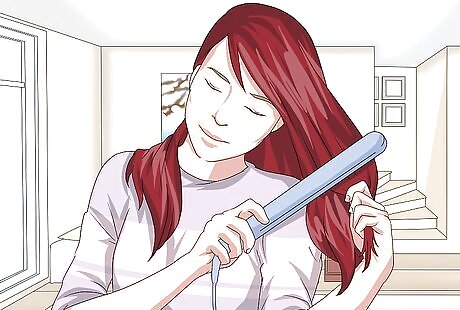
Understand what to expect if you have dark brown or black hair. While it is possible to dye your hair maroon, you must understand that it may turn out very dark. You can try using a 30 volume developer in the actual dye (as opposed to a 20 volume). Another option would be to purchase a brighter shade of maroon hair dye. Using a brighter shade could result in the desired shade because of the darkness of your natural hair color. Avoid bleaching your hair, as this may caught it to turn too light. If you hair is light or medium brown, you don't need to dye it darker or bleach it lighter. Your hair is the perfect base!
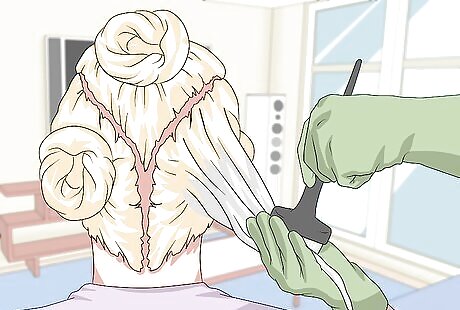
Dye blond hair a darker shade of brown or brownish-red. If you try to dye blond hair maroon, you will end up with a bright purple-ish shade instead. You will need to dye your hair brown or brownish-red first, wash the dye out, then dry your hair. After this, you can proceed to dye your hair maroon. If you have light, red hair, consider dyeing it a more neutral shade of brown--unless you want a more reddish shade of maroon.
Mixing the Dye and Developer
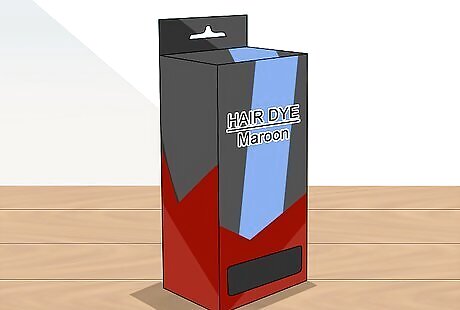
Purchase your dye. For best results, skip the semi-permanent boxed dye and go for the permanent dye sold in individual tubes. If you can't find a pre-mixed shade, you will need to mix the dyes yourself. Ask a sales assistant at the salon or beauty supply shop for advice. For best results, look for dyes that are level 5 or 6. If you have brown hair, consider the following combination: 1.0 Black, 6.29 Garnet, and 6.62 Dark Red Violet Blond.
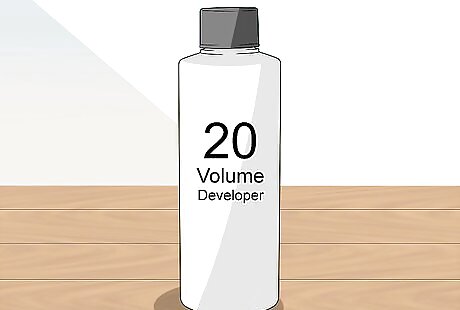
Purchase a 20 volume developer. If you have very dark hair, you will need a higher level--about level 30 volume. Try to purchase the same brand of developer as your dye.
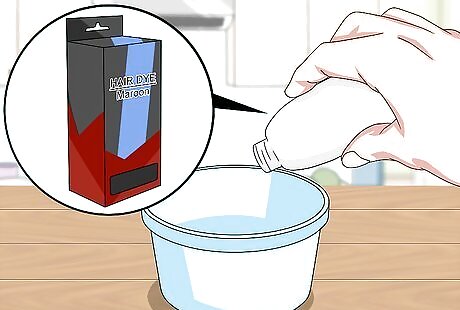
Pour the dye into a bowl or container. Either purchase a hair coloring mixing bowl or use a cheap, plastic bowl or tub. If you can't find a disposable one, use one that you won't mind ruining. If you are using more than one color of dye, pour all of the colors into the bowl, then stir them together. If you are using a black, garnet, and red violet combination, use the following ratio: 1 part black, 5 parts garnet, and 8 parts red violet. Stir everything together until the color is consistent.

Add in the developer. In most cases, you will need equal amounts of dye and developer. Some brands may be a little different, however it would be a very good idea to check the instructions that came with the dye and/or developer.
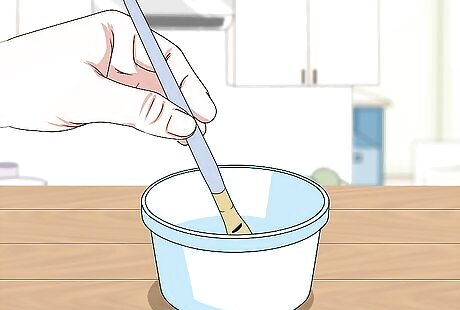
Stir everything together until the color is consistent. There should be no streaks or swirls of dye and developer. You can use the handle of your tinting brush, a plastic spoon, or a small whisk to do this.
Dyeing Your Hair
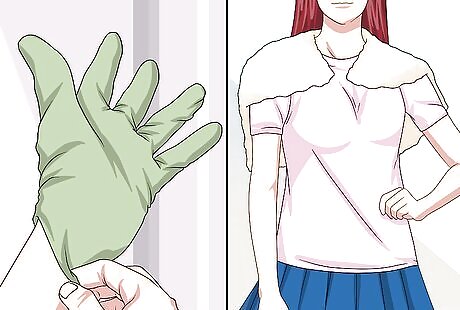
Protect your hands, clothes, and work surface. Lay down some newspaper onto your counter. Drape a dyeing cape over your shoulders. Lastly, put on a pair of plastic gloves for dyeing hair. It would also be a good idea to wear a shirt that you can easily get out of, such as an old button-up shirt. If you don't have a dyeing cape, use an old towel instead.
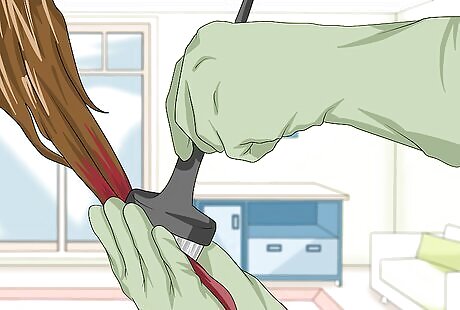
Consider doing a test strand. While not absolutely necessary, dyeing a test strand is highly recommended. Not only will it give you an idea of how the dye will look, but it will also give you an idea of how long to leave it on for. To do a test strand: Take a 1/4 to 1/2-inch (0.64 to 1.27-centimeter) wide section of hair from behind your ear. Apply the dye to it using a tinting brush. Allow the dye to sit for half the recommended time. Wipe the dye off with a damp towel, then pat it dry. If you are happy with the color, use the half-processing time. If you are not happy with the color, reapply the dye, and let it sit for the remaining processing time.
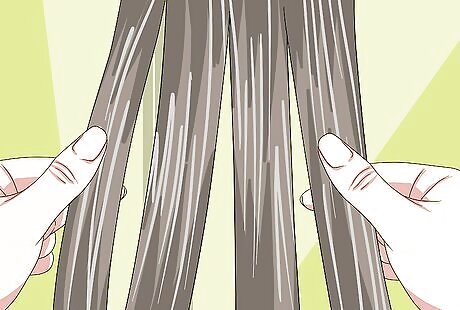
Divide your hair into four sections. Part your hair down the middle using a rat-tail comb first. Next, part your hair horizontally across the top of your head, from ear-to-ear. Coil each section into a mini bun and secure it with a clip. Consider coating the skin around your hairline and nape with petroleum jelly. This will prevent the dye from staining your skin.
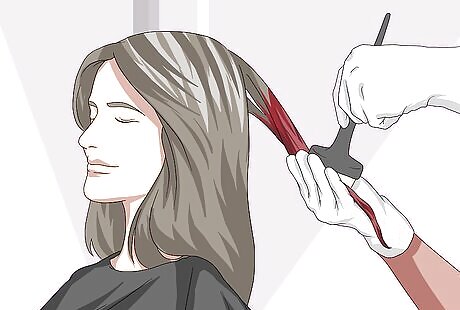
Begin dyeing the top section of your hair. Choose a side to start on, then undo the bun. Working in 1 to 2-inch (2.54 to 5.08-centimeters) sections, apply the dye to your hair. Start from the roots and finish at the ends. You can apply the dye with your fingers, but it will be easier to use a dye applicator or tinting brush. Apply the dye to the hair along your forehead first. This hair is the most visible and will require the longest processing time. Work the dye into your hair with your fingers. Even if you use a tinting brush, there is no guarantee that you coated each strand.

Clip the finished section out of the way, then move onto the next one. Once your finish the second top section, you can do the two bottom sections. Always apply the dye from the roots down. When you are finished with a section, coil it back into a bun, and secure it with a clip.

Leave the dye on until it finishes developing. Each brand will be a little different, so be sure to check the label. In most cases, this will be about 45 minutes. If you plan on doing things around the house during this time, cover you hair with a shower cap.

Rinse the dye out using lukewarm water. Do not apply any shampoo at first. Once you have all of the excess dye out, you can wash your hair with a sulfate-free shampoo that is intended for color-treated hair. Follow up with a hydrating conditioner meant for color-treated hair. Use an alcohol-based face toner to remove any stains on your skin.
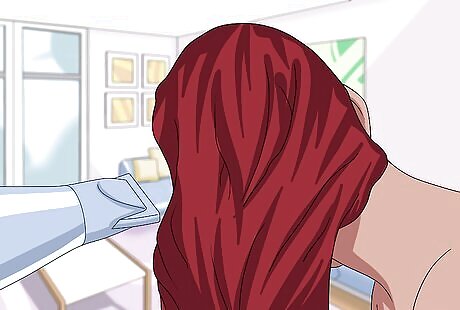
Dry your hair. Pat your hair dry with an old towel first, in case there is any residue. Allow your hair to air-dry, or blow dry it using a hairdryer. Avoid heat-styling your hair, at least for a few days.
















Comments
0 comment